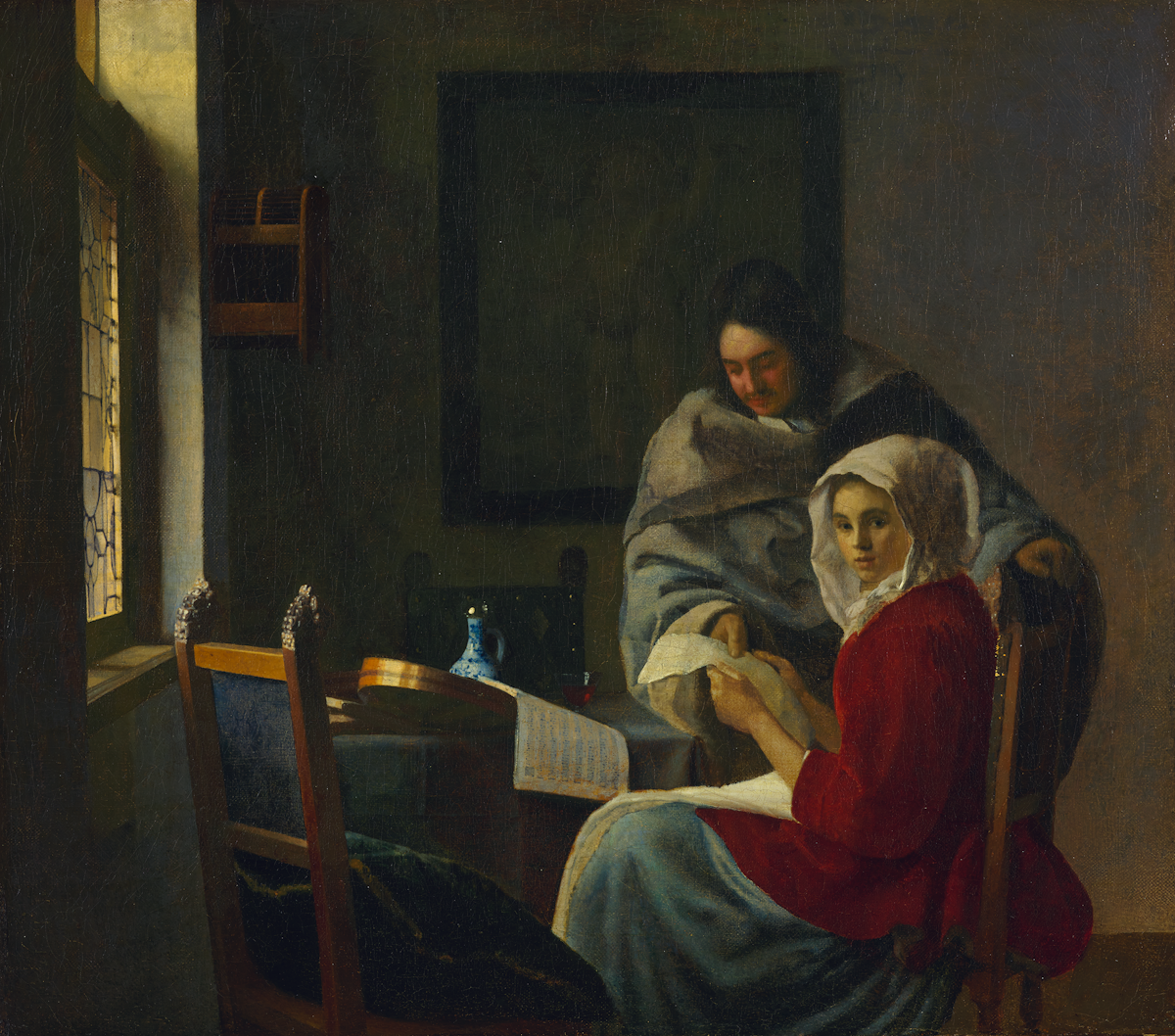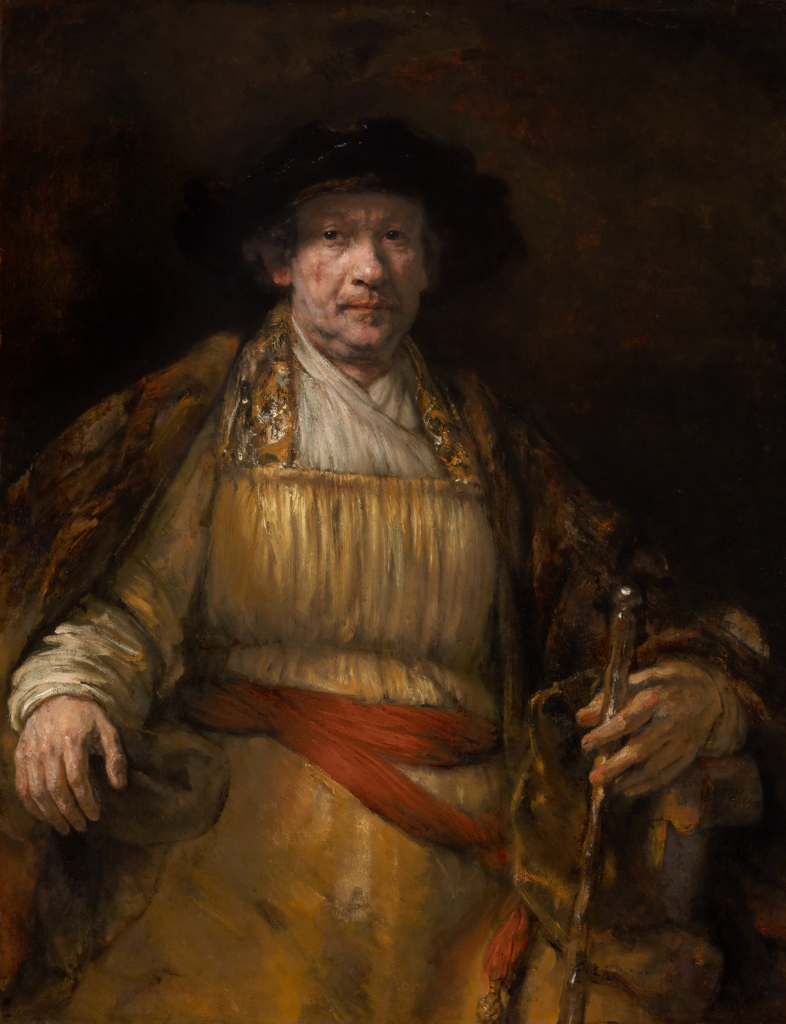A Tale of Two Fricks — Classic Beauty, To New York From Pittsburgh
Visitors to the Frick Pittsburgh are asked who decides what art is worth collecting, and Henry Frick and his daughter Helen provide the answer.

‘Vermeer, Monet, Rembrandt’
The Frick Pittsburgh, 7227 Reynolds Street
Through July 14
Visitors to the Frick Pittsburgh are greeted with an interactive wall that asks, “Who decides what art is worth collecting and preserving?” In post-it form, the public answered, “ME,” “you,” and “everyone.” This installation also asks, “Does knowing who owned a work of art change the way you understand it?”
Such posers greet art lovers come to see “Vermeer, Monet, Rembrandt: Forging the Frick Collections in Pittsburgh and New York.” The exhibition merges the personal collections of industrialist Henry Clay Frick and his daughter Helen, who founded the Frick Pittsburgh, the quasi-Midwestern cousin of New York’s Frick Collection.
While the Frick at New York is closed for renovation, important pieces from its collection get to make their Pittsburgh debuts. The renovation allowed for the two Frick institutions to collaborate in the largest loan the museum has ever approved, according to the chief curator, Dawn Brean.
This is also the first time many of these Old Master paintings have been seen together. The elder Frick was a pioneering art collector who saw fine arts as an investment. He also worried that industrial pollution might harm his vast collection of paintings.
So records Henry’s daughter in explaining the family’s move to New York from their residence at Pittsburgh. Henry Clay Frick’s purchases often made national news, and a loan manager once remarked that “the young industrialist may be a little too enthusiastic about art, but not enough to hurt.”
Spaces like those of both Frick collections face a challenge in creating modern relevance for these Gilded Age philanthropists. Yet there seems to be a rising interest in exhibiting personal collections across museums. The Carnegie Museum of Art recently closed the Milton and Sheila Fine Collection.

That was an exhibition entirely made up of one family’s personal purchases, while the Brooklyn Museum currently has the personal collection of musicians Alicia Keys and Swizz Beatz (Kasseem Dean) on view through July. There’s a mystique to the wealthy collector adorning a home with masterworks.
A surprise of the exhibition is Helen Frick’s comparatively esoteric taste — she had a fondness for early Italian Renaissance works deemed too Catholic or sentimental by her father. She shared his interest in works from France, the most striking of her paintings being François Boucher’s “Pastorale: A Peasant Boy Fishing.”
One of the biggest strengths of “Vermeer, Monet, Rembrandt” is the context it provides on the Frick family. A placard describes Henry Clay Frick as having a “larger-than-life reputation” as “a cutthroat industrialist, staunch labor opponent, and world-renowned art collector.”
The curatorial team situates this beside Sassetta’s “The Virgin of Humility Crowned by Two Angels” (1438), a small Italian Renaissance piece purchased by Helen Frick, and then Rembrandt’s “Self-Portrait” (1658), an enormous canvas purchased by her father. Rembrandt painted himself in regal clothing but, at that phase of his career, was in want of money.
This is the titular Rembrandt, on loan from the New York Frick Collection. The Vermeer, which Henry was particularly fond of, is “Girl Interrupted at her Music” (1658), the first by the reclusive painter to be on view in Pittsburgh since 1940, and the Monet is “Banks of the Seine at Lavacourt,” originally featured in the 1900 Carnegie International.
“Vermeer, Monet, Rembrandt” features more than just the artists in the title, though. Henry’s first documented art acquisition was George Hetzel’s “Landscape with River” (1880), a gorgeous rendering of a landscape in Somerset County, Pennsylvania.
Helen said of her father that he “often rejected pictures that would have caused a discordant note or where the subjects were not pleasing to live with.” Frick’s first Old Master purchase was Dutch painter Jan Van Os’s “Still Life with Fruit” (1796), a standout piece in the entire show.
That is for its technical mastery and meticulous detail — the gleaming eyes of a tiny mouse, the soft blue of a flower, the shine of light on a grape. Henry Clay Frick’s habits might as well be slanted toward a neon sign reading “BEST.” He had a clear eye for pieces that showcased an artist’s skills within their portfolios.
The market for art collection as an investment is in a down moment. Yet the Frick, as well as the Fine and Dean Collections, present collectors as sorts of artists in their own right. The most prolific collectors loved having art in their own homes. This is no doubt why the Frick queries its visitors.
Art collection, after all, is something many see as only for the very wealthy. The works in “Vermeer, Rembrandt, Monet” aren’t provocative in the way many contemporary pieces are. They harken back to an anachronistic appreciation of beauty. Judging by how packed the museum was opening weekend, audiences want to see beauty.

